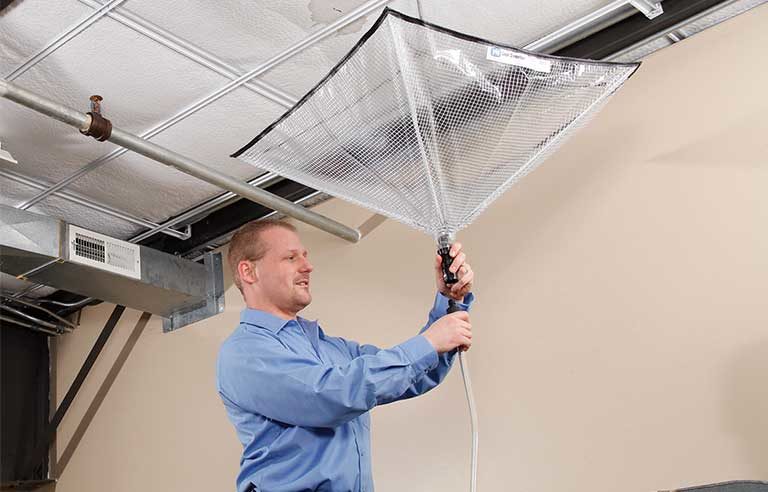Preparing for water leaks
How can I properly prepare my workers and facility for a water leak?

Responding is Carolyn Itle, product manager, New Pig Corp., Tipton, PA.
Spills happen in almost every workplace – it’s a tough fact to face. You plan, prepare and have materials on hand for spills that involve oils, fuels and other hazardous chemicals, but are you prepared for every-day leaks of water?
Water leaks are inevitable and cause major safety concerns, as well as damage to equipment, product inventory and the building structure itself. Sometimes you don’t know your roof has sprung a leak until a rain or snowstorm hits. It’s an unwelcome surprise, but having the right tools on hand to stop leaks will help you keep your business rolling.
Your first mode of response is to contain and capture the leak. An ideal tool to contain the water intrusion is a leak diverter. This tarpaulinlike device can be hung from the ceiling directly below the source. From there, it directs collected water, via a drainage hose, into a temporary storage container or floor drain until repairs can be made.
In addition to overhead leaks, heavy winds can push rainwater through your loading docks or entrance doorways. It’s important to contain and absorb the water intrusion to prevent safety hazards for employees or damage to important product inventory.
Newer absorbents have been engineered to absorb water leaks quickly and efficiently. Some of them can be reused multiple times, as they’re made with superabsorbent polymers with high capacities for absorption. Another containment option is a reusable, impermeable spill blocker dike to channel water to a floor drain or prevent it from migrating to unwanted areas.
Maybe your water leaks happen more frequently and at multiple locations. Keeping all your locations stocked with spill response kits is a great way to stay prepared.
Absorbent socks and mat pads found in spill kits are more efficient than paper towels or rags. They’re designed for fast wicking, higher absorbency and better durability to make cleanups easier.
Strategically place a kit near a doorway with a sign designating that it’s ready to be deployed. Kits can also be placed in other problematic areas such as warehouses, processing rooms, janitor’s closets, and refrigeration or cooling areas where water leaks or condensation could cause problems.
For greater efficiency, bundle your supplies together for a quick response kit, which could include absorbents, a portable leak diverter, and mops and buckets or a spill blocker dike. Other products such as floor dryers, wet vacuums and floor signs are ideal for helping to facilitate the cleanup.
With so many great options to absorb, capture and contain water leaks, you can stay ahead of the curve and be prepared to protect your facility and employees. Preparation is the key, so work with your safety personnel or another facility expert to choose the right supplies to keep your facility safe, your busy day moving forward and your product moving out the door.
Editor's note: This article represents the independent views of the author and should not be construed as a National Safety Council endorsement.
Post a comment to this article
Safety+Health welcomes comments that promote respectful dialogue. Please stay on topic. Comments that contain personal attacks, profanity or abusive language – or those aggressively promoting products or services – will be removed. We reserve the right to determine which comments violate our comment policy. (Anonymous comments are welcome; merely skip the “name” field in the comment box. An email address is required but will not be included with your comment.)

